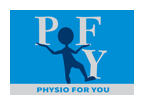Ankle Sprains
Ankle Sprains Ankle joints and feet are the link between feet are the link between your body and the ground. If you “roll your ankle” as the foot hits the ground, the ankle may be sprained. Physiotherapists can assess your ankle to determine the severity and the type of injury, and improve treatment which promotes…










